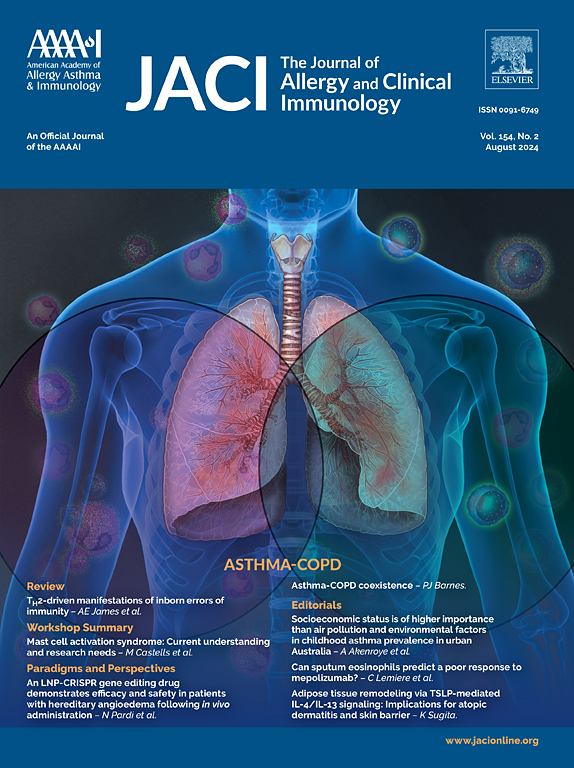Variants in IGLL1 cause a broad phenotype from agammaglobulinemia to transient hypogammaglobulinemia
Background
Agammaglobulinemia due to variants in IGLL1 has traditionally been considered an exceedingly rare form of severe B-cell deficiency, with only eight documented cases in the literature. Surprisingly, the first agammaglobulinemic patient identified by newborn screening (NBS) through quantification of kappa-deleting recombination excision circles harbored variants in IGLL1.

Abstract
Background
Agammaglobulinemia due to variants in IGLL1 has traditionally been considered an exceedingly rare form of severe B-cell deficiency, with only eight documented cases in the literature. Surprisingly, the first agammaglobulinemic patient identified by newborn screening (NBS) through quantification of kappa-deleting recombination excision circles harbored variants in IGLL1.
Objective
To provide a comprehensive overview of the clinical and immunological findings of patients with B-cell deficiency attributed to variants in IGLL1.
Methods
NBS programs reporting using kappa-deleting recombination excision circle assays, the European Society for Immunodeficiencies Registry, and authors of published reports featuring patients with B-cell deficiency linked to IGLL1 variants were contacted. Only patients with (likely) pathogenic variants, reduced CD19+ counts and no alternative diagnosis were included.
Results
The study included 13 patients identified through NBS, two clinically diagnosed patients, and two asymptomatic siblings. All had severely reduced CD19+ B-cells (< 0.1×109/L) on first evaluation, yet subsequent follow-ups indicated residual immunoglobulin production. Specific antibody responses to vaccine antigens varied, with a predominant reduction observed during infancy. Clinical outcomes were favorable with immunoglobulin G substitution. Two patients successfully discontinued substitution without developing susceptibility to infections and maintaining immunoglobulin levels. The pooled incidence of homozygous or compound heterozygous pathogenic IGLL1 variants identified by NBS in Austria, Czechia, and Switzerland was 1.3:100´000, almost double of X-linked agammaglobulinemia.
Conclusion
B-cell deficiency resulting from IGLL1 variants appears to be more prevalent than initially believed. Despite markedly low B-cell counts, the clinical course in some patients may be milder than reported in the literature so far.
Keywords:
agammaglobulinemia; IGLL1; lamba5; B-cell deficiency; newborn screening; NBS; KREC; kappa-deleting recombination excision circles; predominantly antibody deficiencies; vaccine responses
Read the full publication here:
Variants in IGLL1 cause a broad phenotype from agammaglobulinemia to transient hypogammaglobulinemia.
PMID:39147326, DOI: 10.1016/j.jaci.2024.08.002, S2CID: 271879353, Journal of Allergy and Clinical Immunology:Epub ahead of print. 2024, Aug. 13.
Authors:
Maarja Soomann, Viktor Bily, Magdeldin Elgizouli, Dennis Kraemer, Gülfirde Akgül, Horst von Bernuth, Markéta Bloomfield, Nicholas Brodszki, Fabio Candotti, Elisabeth Förster-Waldl, Tomas Freiberger, Maria Giżewska, Adam Klocperk, Uwe Kölsch, Kim E. Nichols, Renate Krüger, Ninad Oak, Małgorzata Pac, Seraina Prader, Kjeld Schmiegelow, Anna Šedivá, Georgios Sogkas, Anna Stittrich, Ulrik Kristoffer Stoltze, Katerina Theodoropoulou, Karin Wadt, Melanie Wong, Maximillian Zeyda, Jana Pachlopnik Schmid, Johannes Trück